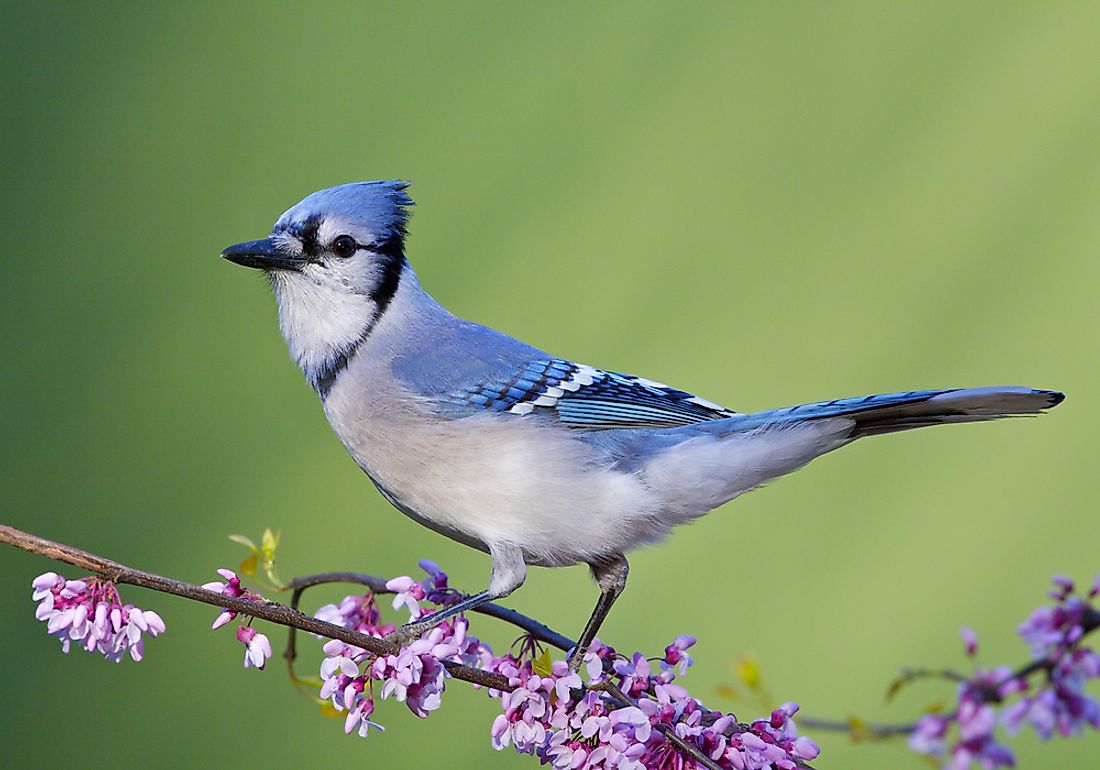Where Do Blue Jays Live?

The blue jay is a large passerine bird native to North America. This bird is known to be beautiful, intelligent, and highly aggressive. There are four subspecies of blue jays; the coastal blue jays, the northern blue jays, the interior blue jays, and the Florida blue jay which is the smallest subspecies. The blue jays often live in small flocks and aggressively protect their nesting site. However, they are prone to hawks and eagles, especially when flying alone. When in groups, they can mob these large birds and fight them off. They can also imitate the calls of their predators, particularly hawks and may use the calls to test the presence of predators in an area.
Physical Appearance
The blue jay is a relatively large bird that measures 9 to 12 inches from the bill to tail and weighs 2.5 to 3.5 ounce. The wingspan is 13-17 inches. Connecticut blue jays weigh 3.26 ounce while those from southern Florida average 2.60 ounces. The bird has pronounced crest on its head and a crown of feathers which it raises depending on its mood. The crest is fully raised when the bird is aggressive or excited. However, the crest bristles outwards when it is frightened. The blue jay has blue wings, tail, back, and crest and a white face. The bird’s underside is also off-white while the neck has a black collar which extends to the sides of the head. The eyes, bill, and legs are all black.
Distribution of Blue Jays
The blue jay can be found from southern Canada through to eastern and central United States. The northern blue jay occurs in the northern US and Canada while the coastal blue jay is common on the southern coast of the eastern United States. The interior blue jay can be found throughout the US while the smallest subspecies, the Florida blue jay, is mainly found in Florida. In Canada, resident population is found in Newfoundland while the breeding population is found in southern parts of the country. The blue jays have also been seen migrating along the Atlantic coast and Great Lakes, with the migration taking place during the day in a flock of 50-250 birds.
Habitat
The blue jays have a variety of habitat within their large range. Some birds have a permanent habitat within their range while others form flocks of 50-250 birds in order to migrate from one habitat to another. Blue jays inhabit all types of forest, especially coniferous, mixed, and deciduous forests. The birds are less abundant in thick forest, preferring woodland areas with beeches and oaks. They are also common in the suburban and urban area, especially in parks and residential areas with oak trees.
Diet
Blue jays feed on a variety of insects, nuts, and fruits. They also feed on grain and small vertebrates and sometimes eat nestlings and eggs of other birds. The birds have strong bills that can crack nuts and acorns. While feeding, the blue jay holds the food item on its feet and peck them open. They can also store food in a cache to feed on later. Blue jays will scare away the small birds from bird feeder but will stay away from the feeder and wait for their turn when the other medium-sized birds are feeding.











